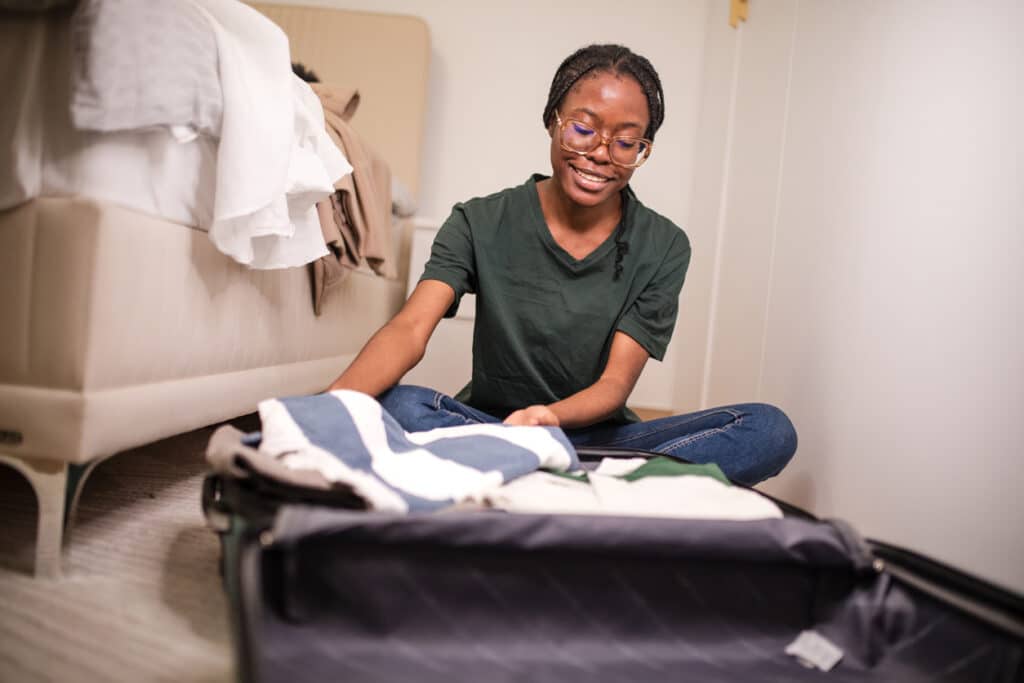Exploring connection, environment, and the evolving science of substance use.
Millions of Americans live with substance use disorder, while many more face challenges with compulsive behaviors such as vaping, gambling, or screen dependence. To explore the latest thinking in addiction neuroscience and emerging models shaping clinical care, The Dorm — a mental health treatment community for young adults — partnered with Dr. Kevin McCauley, MD, Senior Fellow at The Meadows and a nationally recognized leader in addiction medicine, for a special two-part continuing education series in Washington, D.C. and New York City.
Speaking to a room of clinicians dedicated to supporting young adult recovery, Dr. McCauley brought clarity, humility, and a practical lens to a central question in behavioral health: What truly drives addiction — and how do we build treatment environments that promote lasting recovery?
In the discussion that followed, Dr. McCauley addressed questions from the audience and explored several timely themes for today’s providers, including:
- Environment as Exposure
- The Role of Relationships During Recovery
- Navigating Modern Addictions: On topics like screen overuse and cannabis normalization.
Read the Q+A transcript below, and view the full presentation on YouTube.
Audience Q&A – Exploring New Models of Addiction
Dr. Amanda Fialk, The Dorm: Thank you so much, Dr. McCauley, that was a fantastic presentation. Let’s start with some brave folks who are here in person. Does anybody have any questions that they would like answered live and in person?
Audience Member: You spoke a lot about the mind, the body, and consciousness. I was wondering if you had any thoughts about the spirit and the soul within addiction, because I know that sometimes that is also connected in this context.
Dr. McCauley, The Meadows: Well, traditional neuroscience wouldn’t consider that at all. They would consider it something that is really supernatural. But I think that many people really understand that they have an experience of spirituality or spirit, and so you might be able to use 4E Cognition to bring that into their recovery.
A great deal of 4E Cognition comes from Buddhism. The three original authors of the 4E Cognition framework brought in the idea of embodied consciousness, because meditation is going to take a much, much bigger role in the understanding of the brain and the body than the traditional IRISA neuroscience model, which is not going to be able to take [concepts of soul, consciousness, and spirituality] into account.
Dr. Fialk: When we at The Dorm talk about addiction, we like to think of the opposite of addiction as connection. And you also spoke about that in your presentation — the importance of really looking at the social sphere of the individual who is struggling. One of the questions that came in online asked, “What if you have little control over a struggling client’s environment? How would you address that from a treatment perspective?”
Dr. McCauley: That’s difficult. Let’s say that the person is incarcerated, for example. I think that one of the things that I did when I was in prison is I ate a lot of sugar, I ate a lot of candy, and I wasn’t doing my cravings any good. I was exposing myself to an intoxicant that I could actually find, and they’re fairly limited in a carceral setting.
I think that taking a toxicologic approach to what’s going on in the person’s life can still be helpful, but now you can look for buffers. And I would go back to this facet of recovery — who is it that the person is hanging around when they’re in this otherwise highly controlled situation?
[In prison,] I had four friends; they were all interesting guys. None of them were really serious criminals. (One guy was there for adultery, which is a crime under the Uniform Code of Military Justice.) I buffered myself against exposures that were stressful or traumatic by the people that I had in my world.
I like that statement, that the opposite of addiction is connection — I don’t disagree with it at all. I will say that there are people who are active drug users who are very well connected. Something about urban heroin addiction is that people kind of form these family units, very much the way women form family units when they’re in a carceral setting. So I wouldn’t want to completely discount the connection that people can create, even if they’re actively addicted.
But I’ve got my own statements that I like to make, and one of them is: If I relapsed, and I had a dollar to spend on my recovery, before I’d give it to a treatment center, before I’d put it in the basket, I’d spend it on housing. Because housing is such a powerful social determinant of health that if you have it, everything else works better — AA works better, methadone works better, buprenorphine works better, CBT works better. If you don’t have it, nothing really works all that well.
And so I think I would really try to use that same idea of looking for the social determinants of health, even for a person who’s houseless or in a carceral setting, you can still try to figure out how to get the danger of those exposures down.
Dr. Fialk: Thank you. That’s such an important point — housing justice and medical care and mental health care are truly linked.
We have time for one more question. I’m going to combine a couple that came in. The question centers around screen addiction and media. Social media addictions and screens are clearly an everyday part of all of our lives, especially the lives of our young adult clients. How do you suggest helping our young adult clients to navigate that? What I’m going to add in is the same too with the legalization of marijuana. Exposures are everywhere. How do you help our young people to navigate being in front of screens and being around marijuana when they’re trying to recover?
Dr. McCauley: Well, let me take the marijuana thing first. One of the ideas is to stop using the word marijuana and use the word cannabis, because marijuana has its own history of bad things associated with it.
But so far, what the studies have shown is that even in those states that have legalized cannabis for recreational use, use has gone up, but youth use hasn’t. And I think that says something very positive about young people today — they’re not taking on that exposure, or they’re delaying that exposure.
That would be a very, I think, toxicologic way of understanding it. If you can push off that initiation of use, that first time the person uses, by even a few years, then you’re working within a toxicologic model.
One thing that would be very good is to know the dose on the package. In Washington State, they actually have the dose on the package, and part of the law in Washington State is that no one package of a cannabis product can have more than 10 milligrams of THC in it. That’s another way to limit the damage that could be done by that potential exposure.
But the everyday nature of screens, I think, can be filtered through that same rationale. How much time of the day is the person on a screen? What’s the age at which a person can safely use a smartphone? This is all using this toxicologic approach. First of all, can you take a break? Can you stop doing it? And be able to have a particular period of time where you’re not using the technology at all? And you’ll figure out pretty quickly whether you’re dealing with overuse or whether you’re dealing with addiction.
But this is something I think that our entire field has to kind of come to grips with. Once a person has that resilience on board, once they have some recovery on board and they’re getting better, can they return to use?
I think that with certain things like cocaine and heroin, the answer is always going to be no. But are there safe ways to go back to the smartphone, are there safe ways now to use something like Facebook without using it in an addictive way? And I think that more and more we’re going to realize that if we follow certain rules, then the risk is much, much less.
But I think that there are certain rules about addiction too. There’s no way for me to moderate my use of cocaine. It’s just not going to happen. And so I think part of being an addiction medicine provider is being along the journey with that patient and really being willing to go through these periods of time where they might experiment with a return to use. That’s a new term — “return to use.”
I have faith that if that partnership between that addiction medicine specialist, and that’s a doctor or a physician’s assistant or a nurse practitioner, who is specially trained in the unique needs of people in recovery, that the patient and the provider themselves will be able to come up with the right answer. But there may be some things that, simply because we live in a modern world, we’re going to have to find ways of being able to use more safely.
Dr. Fialk: Thank you so much, Dr. McCauley. We’re getting so many thank-yous and just, people are raving about this presentation.
Dr. McCauley: Thank you very much, this was wonderful.



